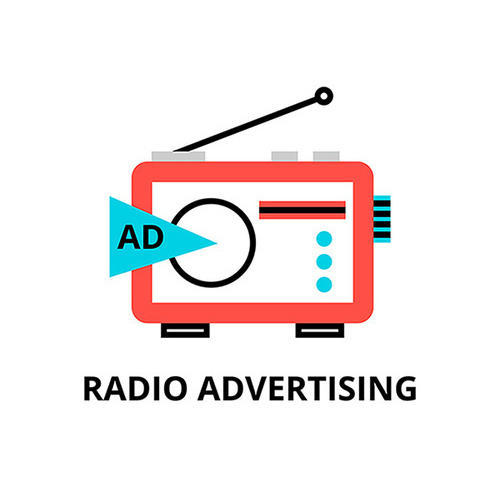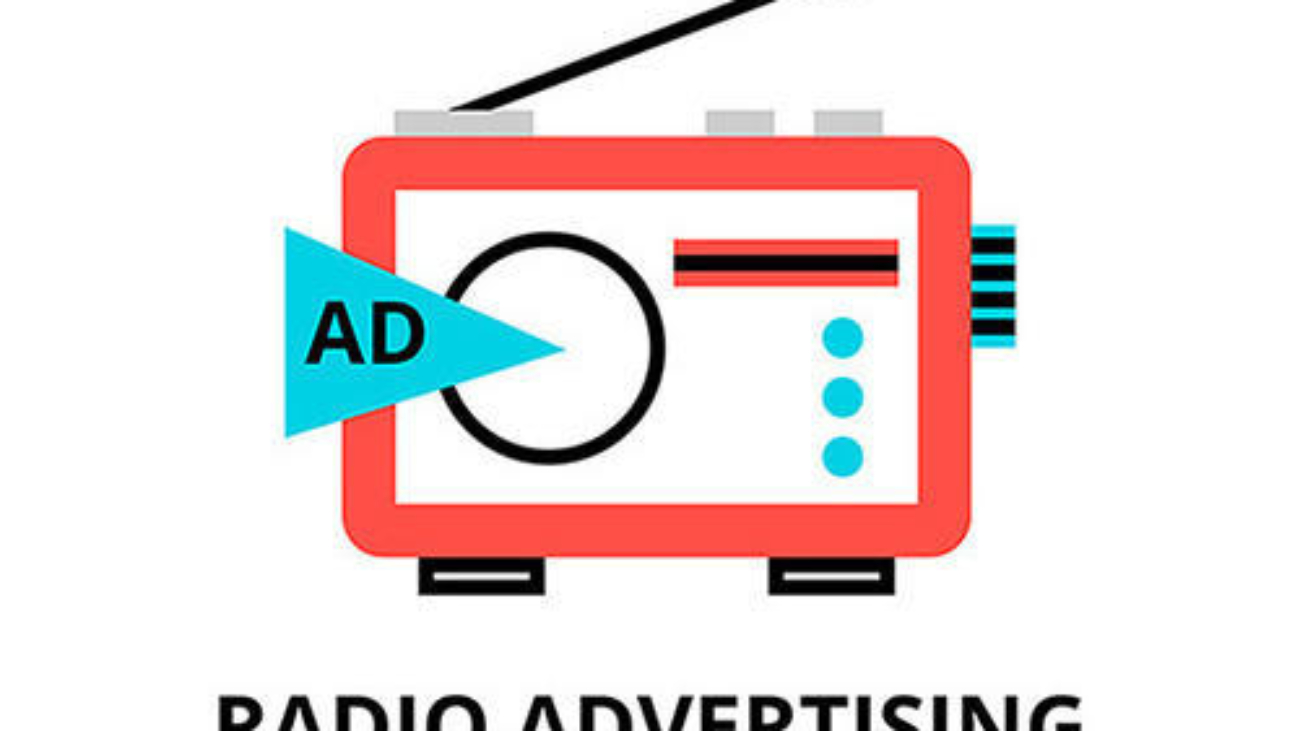Introduction

Radio advertising, often referred to as radio commercials or radio spots, is an integral and enduring part of the advertising industry. Its unique ability to reach a vast and diverse audience has made it a powerful tool for marketers for nearly a century. In this comprehensive guide, we’ll delve into the multifaceted world of radio advertising, covering its nomenclature, historical evolution in India, various types, formats, scriptwriting, purpose, and its advantages and disadvantages. So, let’s tune in to the fascinating realm of radio advertising.
What is Radio Advertising Called?
Radio advertising, the voice of brands on the airwaves, goes by various names. It can be referred to as:
Radio Commercials: This term is often used to describe short advertisements broadcast on the radio, usually lasting between 15 to 60 seconds.
Radio Spots: Similar to radio commercials, radio spots are short advertising segments played during breaks or between programs on a radio station.
Audio Advertising: With the advent of digital platforms, audio advertising has expanded to include not only traditional radio but also streaming services like Spotify and Pandora.
Radio Jingles: These are short, catchy musical pieces often used in radio advertising to create a memorable and engaging brand identity.
History of Radio Advertising in India
To understand the significance of radio advertising in India, it’s essential to explore its historical roots. Radio advertising in India has a compelling story:
Early Beginnings
Radio broadcasting began in India in the early 1920s, during British colonial rule. The first radio station, All India Radio (AIR), started in 1927, serving as a medium for spreading information and entertainment. However, the concept of radio advertising as we know it today didn’t emerge until much later.
Emergence of Commercial Radio
The liberalization of the Indian economy in the early 1990s brought significant changes to the advertising landscape. Private FM radio stations gained prominence, leading to an upsurge in radio advertising opportunities. This was a turning point in India’s radio advertising history.
Contemporary Landscape
Today, radio advertising in India has evolved to include various formats and has become an indispensable tool for businesses of all sizes to reach their target audiences. It has adapted to the digital age, extending its reach through online streaming services and podcasts.
Types of Radio Advertisements
Radio advertisements come in diverse formats and styles, each designed to cater to specific marketing objectives and target audiences. Here are some of the most common types of radio advertisements:
- Traditional Radio Commercials: These are the most common radio ads, typically 15, 30, or 60 seconds in duration. They convey a brand message, promote products, or provide information to listeners.
- Radio Jingles: Jingles are short, memorable tunes that feature a brand’s name or slogan. They create an audio identity for the brand and are often used in radio advertising.
- Sponsorships: In this type of advertisement, a brand sponsors a radio show, segment, or event. The brand’s name is mentioned in association with the content it sponsors.
- Radio Interviews: Some advertisements take the form of interviews or discussions, where experts or brand representatives discuss their products, services, or industry-related topics.
- PSAs (Public Service Announcements): These are non-commercial advertisements designed to raise awareness about social or public issues. They are often broadcast by nonprofit organizations or government agencies.
- Testimonials and Endorsements: Radio advertisements may feature testimonials from satisfied customers or endorsements from celebrities or industry experts to build trust and credibility.
Radio Advertisement Examples
To better understand the impact and creativity of radio advertisements, let’s explore some notable examples:
- Cadbury Dairy Milk – “Kuch Meetha Ho Jaye”: This iconic jingle became synonymous with Cadbury Dairy Milk, creating a lasting brand identity.
- Radio Mirchi – “Mirchi Sunnewale Always Khush”: This campaign effectively promotes Radio Mirchi and associates the station with joy and happiness.
- Vodafone ZooZoo Campaign: Vodafone’s ZooZoo characters became immensely popular through their radio commercials and TV ads, making the brand more relatable and endearing.
- Fevicol – “Fevicol Ka Jod”: Known for its humor and catchy jingles, Fevicol’s radio advertisements have entertained and reinforced the brand’s effectiveness.
- Airtel – “Har Ek Friend Zaroori Hota Hai”: This campaign not only achieved brand recognition but also became a cultural phenomenon.
These examples highlight the creative and impactful potential of radio advertising in India.
Radio Advertisement Format
Radio advertisement formats are carefully structured to make the most of the limited time available for the message. Here’s a typical radio advertisement format:
- Introduction: Begin with a catchy hook or tagline that grabs the listener’s attention within the first few seconds.
- Body: This is where you convey the main message, highlighting the product or service’s unique selling points (USPs).
- Call to Action (CTA): Encourage listeners to take a specific action, such as visiting a website, calling a number, or visiting a physical store.
- Contact Information: If necessary, provide contact details for the audience to reach out, along with any special offers or promotions.
- Closing: End with a memorable jingle, tagline, or closing statement that leaves a lasting impression.
Radio Advertisement Script
Creating an effective radio advertisement script is crucial to deliver a compelling message in a limited timeframe. Here are some key tips for writing a successful radio ad script:
- Know Your Audience: Understand your target audience’s preferences, needs, and pain points to tailor your message effectively.
- Keep It Concise: Radio ads are short, so every word counts. Avoid unnecessary information and focus on the core message.
- Use Clear Language: Ensure your message is straightforward and easy to understand. Avoid jargon or complex terms.
- Engage Emotions: Create an emotional connection with the audience by using relatable stories, humor, or touching moments.
- Include a CTA: Clearly state what you want the audience to do, whether it’s visiting a website, making a call, or visiting a store.
- Rehearse and Record: Practice the script with a voice actor to fine-tune the timing and delivery.
Purpose of Radio Advertisement
Radio advertising serves several purposes, each contributing to the overall marketing strategy of a business:
- Brand Awareness: Radio advertisements help create brand recognition and awareness among a broad audience.
- Product Promotion: They are effective in promoting specific products or services, showcasing their features and benefits.
- Driving Sales: Radio ads can drive immediate sales by offering special promotions or discounts.
- Building Trust: Testimonials and endorsements in radio ads build trust and credibility with the audience.
- Spreading Messages: Public service announcements (PSAs) use radio advertising to raise awareness about social or public issues.
- Reaching a Local Audience: Local businesses can target their immediate community with radio ads, making it a powerful tool for local marketing.
Advantages of Radio Advertisement
Radio advertising offers numerous advantages that make it an attractive choice for marketers:
- Wide Reach: Radio reaches a vast and diverse audience, making it a powerful medium for mass marketing.
- Cost-Effective: It is often more budget-friendly than other forms of advertising, such as TV or print.
- Local Targeting: Radio allows businesses to target specific geographic areas or demographics effectively.
- High Frequency: Frequent ad repetition on radio can reinforce brand messages and improve recall.
- Immediacy: Radio ads can be created and aired quickly, making them ideal for time-sensitive promotions.
- Loyal Listener Base: Many radio stations have dedicated listener bases, offering a built-in audience for your message.
Disadvantages of Radio Advertisement
While radio advertising has numerous benefits, it also comes with its own set of challenges:
- Limited Visual Element: Radio is an auditory medium, which means it lacks the visual impact of TV or print ads.
- Ad Avoidance: Some listeners may change stations during ad breaks, potentially reducing the effectiveness of the campaign.
- Intrusive Ads: Overly frequent or loud ads can annoy listeners, negatively impacting brand perception.
- Limited Information: The brevity of radio ads means you can only convey limited information about your products or services.
- Competition: Radio advertising competes with other advertisements and the content itself, so standing out can be challenging.
Conclusion
In the ever-evolving world of marketing and advertising, radio advertising continues to hold a unique and enduring place. Its rich history, diverse formats, creative potential, and wide-reaching impact make it an invaluable tool for businesses looking to connect with their target audiences. Understanding the nuances of radio advertising, from scriptwriting to choosing the right type of ad, is essential for creating successful campaigns. While it has its advantages and disadvantages, radio advertising remains a dynamic and effective channel for marketers in India and around the world.

